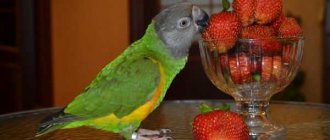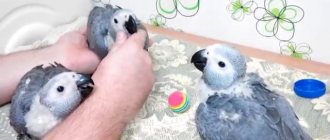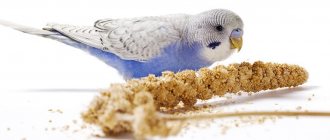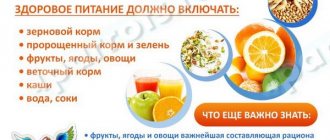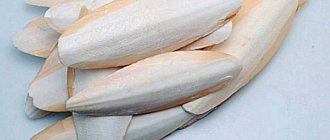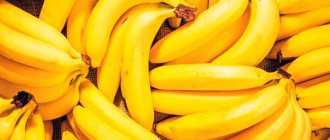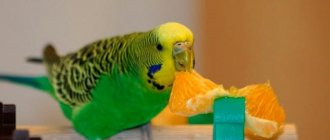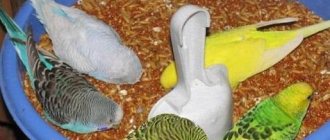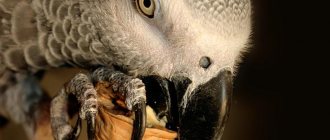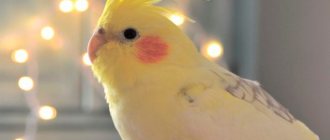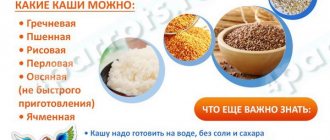The diet of a budgerigar, like any other animal, must be balanced. To properly create a menu for these birds, you need to include in it a maximum of natural sources of vitamins and microelements. Let's find out what grass budgies love, which will only benefit the body, and which can cause harm.
Why do we need greens in the diet of parrots?
Fresh herbaceous plants are a natural source of vitamins and minerals. In addition: in the wild, greens, along with seeds and fruits, are the basis of the diet of parrots.
It is no secret that the health of parrots directly depends on proper nutrition. Find out what parrots can and cannot eat.
Grain mixtures alone, the main homemade food, are not enough for the normal life and health of birds. Vitamin complexes cannot completely replace vitamins of natural origin, so fresh greens are an absolutely necessary element in the diet of birds.
In addition to the fact that all fresh herbal plants are rich in vitamins and minerals, they have another wonderful quality: low calorie content. In their natural habitat, parrots fly a lot and lead an active lifestyle, and the grain component of their diet is kept to a minimum. These circumstances help the parrot to be in excellent physical shape.
But home feeding with grain mixtures and lack of exercise contribute to excess weight gain and obesity. The result is weakened immunity and illness. Low-calorie vitamin food of natural origin has a beneficial effect on the immune system, prevents the bird from gaining fat and, therefore, is very beneficial for the health of your pet.
It will probably be useful for you to read about what parrots like to eat in addition to their main food.
What greens do birds prefer?
Despite the fact that the wavy bird is an exotic bird, in our latitudes there are many green plants that the bird loves. They can be found on lawns, in parks, in the suburbs. You just need to know what grass your parrots can eat.
The following plants are useful:
- dandelion leaves;
- plantain;
- clover;
- lettuce leaves;
- nettle.
Parrots consume dandelion in its entirety: stems, flowers and even roots. Dandelion tops are an essential source of vitamin A. Before giving dandelion tops, they must be thoroughly washed, especially the roots. Dandelions can be given to parrots; this is perhaps their favorite treat.
Plantain begins to grow in early summer by feeding young leaves. In mid-summer, spikelets with seeds appear, which the bird loves very much.
Clover leaves are harvested in midsummer and are a beneficial plant for birds. You can also give budgies flowers. The owner has no doubt whether parrots can eat clover and its leaves.
Lettuce is a favorite delicacy for birds. Unlike wild plants, they are present in the diet of birds all year round. Leaf lettuce is rich in fiber, which birds need in an artificial habitat. A parrot can eat lettuce either raw or frozen, it doesn’t matter.
Nettle is a source of vitamin C. Young greens contain the most of it. Already in early spring you can find the first shoots. Before use, nettles are scalded with boiling water. Can be frozen or dried for the winter.
All these herbs can be given safely in the summer, and in winter they decide whether the parrot can replace them with lettuce leaves.
Grass for parrots
Although in the summer you can find a huge variety of herbaceous plants, not all of them are suitable for feeding birds. Some plants are strictly contraindicated, while others need to be fed to birds with extreme caution. On the other hand, there are greens, which, thanks to the vitamins and minerals they contain, are simply irreplaceable for birds.
Which one is possible?
Among the herbaceous plants that are most useful for parrots of various species are the following:
- shepherd's purse;
- plantain;
- dandelion;
- amaranth;
- woodlice;
- chickweed lanceolate;
- chicory;
- young nettle;
- turnip;
- beet tops;
- salad greens.
In the cold season, if it is not possible to feed the bird with fresh green vegetation, you can use hibiscus, chlorophytum or begonia.
We advise you to find out whether it is possible to feed parrots with bananas, bread, oranges, cucumbers and tangerines.
Parsley used to be considered an herb that should not be given to parrots. However, recently, thanks to research, the opinion of experts regarding parsley has changed. Now this plant, rich in vitamins and minerals, is recommended to be introduced into the bird’s diet.
Which one is not allowed?
Any herb is not suitable for feeding parrots. First of all, the following plants should be mentioned:
- dill;
- cilantro;
- green onions and garlic;
- yarrow;
- sorrel;
- spinach;
- celandine;
- sagebrush;
- basil.
Did you know? The so-called owl parrot, or kakapo, living in New Zealand, is nocturnal and cannot fly. It is curious that its diet includes plant sap - the bird chews leaves and shoots, but does not tear or swallow them.
Greens from the human diet that are dangerous for pets
There are endless debates among parrot breeders about whether it is possible to give parsley and dill to a parrot in unlimited quantities. Scientists have their own authoritative opinion regarding dill in a parrot’s diet and the question of whether it can be given.
Important! All types of herbs - dill, parsley, celery - contain a large amount of essential oils, which are potentially dangerous to the health of the bird, as they are toxic to it. It is not advisable to give your parrot dill and parsley leaves.
Bird lovers, when asked whether parrots can eat dill, answer positively. It turned out that dill can be given in small quantities; it will not harm the bird. Moreover, dried dill can be added to the parrot’s main diet or as a supplement for respiratory diseases.
Spices can harm the bird’s body only if it is sick. The veterinarian will decide whether and in what quantities dill can be given to the parrots. It is not always possible to detect abnormalities in the functioning of a pet’s body by sight. To avoid unpleasant situations, you need to make sure exactly what kind of grass you can give to your bird.
Regarding parsley and whether a parrot can have it, the opinion is different: absolutely not. To the question about celery and whether it can be introduced into a parrot’s diet, the answer is also clear: this spicy herb is dangerous for birds.
How to properly give grass to a parrot
It is advisable to give birds young greens when they are tender and soft. The sooner you start feeding your parrot greens, the more willing he will be to eat them. You should not limit yourself to one type of green food; it is recommended to diversify the menu with all available types of green vegetation.
If the bird does not show much desire to eat greens, try placing it near its feeder. You can place grass between the bars of the cage so that it is at the level of the bird's head.
Rules for collecting and storing plants
Here are the axioms that must be observed by anyone who decides to start preparing greens for their feathered pets:
It is best to collect herbs outside the city limits - in forests and meadows, in summer cottages. Those who still decide to pick greenery in the city should do this in public gardens and parks. In any case, the farther your chosen plants are from large concentrations of cars and industrial areas, the better.
Collect only those herbs that are familiar to you and that you know for sure will not harm the parrot.
You should either not pick questionable greens at all, or bring them home, find out their name, and then understand whether they are suitable for food for birds.
A step-by-step guide for those who decide to collect and offer herbs from the natural environment to their pets:
- The brought plants must be left in a bowl of water for a period of 15 minutes to several hours (depending on the place of collection and the time during which they remained without moisture), and then rinsed under running water. During the washing process, dirt from the leaves and stems will dissolve, various insects will float up, and the herbs themselves will also be refreshed.
- Then the plants should be slightly dried by laying them on a towel or clean cloth.
- Freshly picked grass is offered to parrots in their entirety, hanging in a cage. It is also crushed to be added to mash or mixers.
- Storing greens is quite simple. However, there are nuances here that should be taken into account.
Green food in the diet of budgies from spring to late autumn. Grass, greens, flowers
For weekly supplies, washed and dried herbs are placed in a plastic bag and sent to a box designed for storing vegetables and fruits in the refrigerator.
For winter preparations, it is worth collecting plants in May-June, when they are still quite juicy and fresh.
For long-term storage, the dried grass can be cut up and placed in a bag or plastic container and placed in the freezer. In cereal plants, only the spikelet part is cut off with scissors. You should take out the workpieces as needed, in portions, so that, after defrosting, you can cook on their basis, for example, mash.
Important! It is better to chop herbs with fleshy leaves before freezing, and it is quite acceptable to freeze cereals (spikelets) whole.
GREENS FOR THE PARROT. Where to collect and how to process. Grass for parrots.
House plants that budgies can eat
Eating indoor plants often becomes the main cause of poisoning and even death of the wavy. This is due to the fact that some flowers are prohibited from being given to parrots, since they contain substances that negatively affect the bird’s health.
Harmless plants include:
- chlorphytum;
- hibiscus;
- aloe;
- balsam;
- arrowroot;
- citrus tree;
- rose;
- toast;
- bamboo;
- dracaena.
These flowers are completely safe for the wavy, if they were not purchased several hours ago, so they can be treated with various chemicals.
Dangerous indoor plants that cause significant harm to the bird’s body include anthurium, monstera, spathiphyllum, philodendron, colocasia, alocasia or syngonium. These flowers have a specific excretory tissue with protective functions. As soon as the parrot approaches these plants, they secrete poisonous juice, causing swelling of the larynx and oral mucosa. The juice, if it gets into the eye, causes conjunctivitis or changes the cornea.
Birds should not touch croton, acalypha, milkweed and jatropha. They contain euphorbine, which causes serious poisoning. It is accompanied by severe burns of the larynx, inflammation of the mucous membrane and disruption of the digestive system.
It is forbidden to allow birds near eucharis, hemanthus, clivia, hipperastrum, brovallia, petunia, allspice, datura, brugmansia or ornamental pepper. Eating such plants causes serious poisoning, so the bird develops nausea, drowsiness, diarrhea and vomiting. Among coniferous plants, the yew tree is dangerous.
How to feed a parrot salad?
Yes, it is very important to rinse the lettuce thoroughly before feeding it to your parrot. This is especially important when purchasing lettuce from the store rather than lettuce that you have grown, for example, in your garden at home. This will help remove some of the pesticides on the outside of the lettuce that may harm your parrot. Additionally, this will also help remove some of the salt from the salad since most types of lettuce contain a lot of salt.
Chopping the lettuce is not very necessary as long as you only give your parrot a reasonable amount of lettuce. It is best to leave the lettuce in large chunks as the parrot will take time to eat and this may give the bird something to do.
Breaking a large piece of food into smaller pieces is a lot of fun for parrots and will keep them busy and entertained while enjoying a healthy snack!
Source
What types of lettuce can you feed your parrot?
As you may know, there are several types of lettuce. Because of this, a cautious pet owner may wonder what types of lettuce are safe to give to their parrot and which are not.
Butterhead salad
Butterhead lettuce is a common type of lettuce often seen in grocery stores, and it certainly isn't hard to find.
Butterhead lettuce has many nutrients for both people and parrots! Firstly, the salad is rich in calcium and various vitamins such as vitamin A, C, K, as well as vitamin B6, while it is low in sodium and cholesterol, which is ideal for the parrot.
It is important to note that this salad is also rich in iron, which is a good indicator up to a certain point. Excessive iron in a parrot's diet can cause certain health problems. In this particular case, excess iron can cause a disease that is mainly found in birds called iron storage disease.
Batavian salad
Batavia salad resembles a regular salad; however, you will find that the leaves are more wrinkled than usual. This variety of lettuce can vary in color, being either bright green or red-brown in color. Batavia salad meets your calcium needs and has a significant amount of protein.
Celtuce
A celery-lettuce hybrid is another great salad choice that is very nutritious for both you and your parrot! This variety of lettuce is low in fat.
This lettuce does contain a significantly higher amount of sodium than the previous types of lettuce mentioned, but the amount is still not harmful to your bird as long as you don't feed it in excess. Moreover, this green salad is rich in many vitamins such as vitamins A and C. When it comes to minerals, this variety of lettuce is also rich in them. It is rich in calcium, iron, magnesium and even phosphorus.
Iceberg
This is the type of lettuce you will most often find in fast food burgers. There is nothing wrong with feeding your parrot iceberg lettuce as long as the portion size is appropriate.
Romaine lettuce
Unlike most types of lettuce, which are round in shape, romaine lettuce grows as a tall head with strong, dark green leaves.
While most types of lettuce are heat intolerant, romaine lettuce is an exception and can handle the heat.
This salad has the highest vitamin A content of all the previously mentioned lettuces, and also contains calcium and vitamin C.
What to feed your cockatiel, rosella, kakarika?
It is generally accepted that medium-sized parrots include cockatiels, rosellas, lovebirds, kakarikis, lories, Senegalese and ringed parrots (the most common among ringed parrots is the Ringed Parrot). Food for medium-sized parrots typically includes: Millet (Italian, yellow, white and red millet) makes up approximately 70% of the total grain diet. Approximately 10% of the diet is sunflower seed, the remaining 20% of the diet comes from oats, buckwheat, flaxseed and other grains. It is also recommended to add various nuts to the food, but not much, so as not to cause metabolic disorders. Just like other types of parrots, medium parrots should not be deprived of fruit and vegetable food.
What do kakariki eat?
The need to create good and completely suitable living conditions for birds further determines not only their behavioral characteristics and, in particular, activity, but also the duration of life itself.
This factor plays a significant role, since no owner wants the quick and fleeting death of his baby. It is food that becomes one of the determining factors in this aspect for any living creature.
The daily food intake of kakariki parrots is the absence of monotony. The list of consumed products must include:
- 60-70% comes from vegetables, fruits, plants;
- 15-20% - grains;
- 5% - food of animal origin.
The parrot is able to independently regulate the amount of food it eats. That is, there is no probability of overeating, but at the same time there is a stable probability of the formation of preferences in specific individuals for any specific dishes.
Therefore, the question of how much kakariki should eat has an extremely simple and understandable answer.
Grain mixtures
The main mistake of all beginning poultry farmers is feeding exclusively with ready-made grain feed. In fact, it may only make up 15-20% of the total diet.
Therefore, if we are talking about a mixture of grains, then it must have not only high quality characteristics, but also contain a complex composition. It requires the presence of a significant amount of protein-type cereals, as well as minerals.
It is usually recommended to include small grains in the kakarika diet. They eat them with great pleasure, since they themselves are not large in size. Options identical to feeding birds such as finches or forest birds are suitable.
These mixtures contain a wide variety of herbs that birds love. If you adapt, you can observe and over time identify several types of food that your pet will like. Then they can be mixed with each other.
To increase learning ability, it is recommended to feed parrots with flax or sunflower seeds. They can also be given corn and unleavened biscuits for these purposes. The main condition is small doses of treats.
Another interesting feature of these birds is their unique approach to eating this type of food. It is recommended to pour grains in excess. This is due to the fact that they often scatter grains in different directions around the feeders.
Treats for parrots. How to pamper your parrot?
You can offer almost anything from berries (birds will willingly eat blueberries, cherries, raspberries, strawberries, gooseberries, cherries, wild strawberries, currants (all varieties), serviceberry, honeysuckle, etc.) that you eat yourself, except, perhaps, watermelon . The thing is that quite often, various tricks are used to quickly grow and turn red a watermelon, including adding various fertilizers and “chopping” the watermelon. Often people themselves receive severe poisoning, but birds, alas, cannot tolerate such poisoning and die.
In the autumn, it is also recommended to give berries. Birds are excellent eaters of red and black rowan, viburnum, and hawthorn, which can be prepared in the autumn and stored in the freezer. If you have nowhere to pick berries, you can buy them at vegetable markets; in the fall, in the shopping arcades of summer residents, many people sell black rowan. As a last resort, most stores always sell frozen cranberries, black currants, etc. They also eat rose hips with great pleasure. Dried rose hips are now sold in almost every supermarket; they can be soaked and given to birds. The berries are very healthy and contain a huge amount of vitamins, which are so necessary in the fall. By the way, berries have an excellent effect on the color of plumage; they make growing feathers brighter.
Seasonal conditions
What to feed kakarika at different times of the year? This question also comes up quite often and is reasonable, since in winter and summer birds eat different foods.
In summer, berry crops can be introduced, as they are available in stores and markets and become more accessible. Nuts are often added in the fall. And in winter, you usually have to return to the germination point.
Many people ask an interesting question: can kakarikas eat strawberries? The answer is simple. Such berries will be useful to them in small quantities. But at the same time, they include a lot of microelements that are useful for the parrot, which will have a positive effect on the digestive processes.
About pasture
To diversify their diet, our pets need to receive a lot of succulent food. In nature, kakariki, in addition to seeds and berries/fruits, feed on flowers and herbs. We, of course, living in the middle zone of the Northern Hemisphere, cannot provide them with a natural diet, however, we also grow many plants that can be offered to kakariki as succulent food, which I strongly recommend doing regularly.
Most herbaceous plants and flowers keep well for at least a week (or even two) in a glass of water or a wet towel in the refrigerator, so you can give your parrots bouquets every day without having to pick them every day.
I will write mainly about those plants that I myself offered to my parrots. Not everything I propose is an indisputable component of the diet, however, regarding plants that are controversial/uncommon as food for parrots, I will indicate what I know about them, and then each owner will decide for himself whether it is advisable to give this or that species. And as always, a disclaimer that I am not the ultimate truth and not a guru.
In our case, I collected mainly wild and secondary wild plants; I have less experience with garden flowers, although I hope to acquire it this year if anything can grow on the loggia. List of edible flowers for parrots (mainly garden flowers)
Winter
In most parts of Russia there are frosts and snow in winter, which makes it impossible to collect herbaceous plants. If you are lucky and you live where there is no snow and frosts are not severe, then you have access to, for example, young dandelion leaves, wood lice, knotweed, nettle, strawberry leaves, as well as frost-resistant cultivated flowers like calendula (this winter I this was found in the Gelendzhik area).
However, in addition to herbaceous plants, there are also shrub trees; in winter they are especially important. If you pick them and put them in water at home, you can wait for the buds to swell and young leaves and even flowers to appear. Also, winter is the only time of year when the branches and bark themselves are popular with my parrots. This winter, my fruit tree , plucked at the very beginning of February with very small closed buds, after two weeks of standing in water and spraying, many flowers opened, which the parrots were incredibly happy about.
alder, hazel, and birch begin to bloom well (only, again, they benefit from high humidity), and willow flowers easily open and begin to bloom (goat willow, holly willow) . (Note: There is an opinion that you should not often let parrots chew willow bark, as it contains salicin, which is converted in the body into salicic acid, which is an ingredient in aspirin.) So, natural sources of pollen for our pets can be obtained at home from outdoor plants already in winter.
I also offer my parrots coniferous branches ( spruce, pine ), but I just make sure they don’t have a lot of resin on them.
Spring
The temperature rises, daylight hours increase, and the buds begin to swell outside. At this time of year, you can continue to offer tree branches, but they will need less standing in the water until they bloom. The willow blooms first
Then the catkins of birch, alder, and hazel , and after a while the Norway maple . My parrots love maple honey flowers.
larch buds are opening - parrots really love these tender spring leaves.
And then comes the time for the fruit rosacea trees to bloom.
Cherry (as well as plum, apricot and other plants of the Plum genus). Of the plants of this genus, bird cherry should not be given, as it is considered toxic. It is also undesirable to use the branches of the Plum genus plants themselves as regular branch food, since the bark contains a cyanogenic glycoside. However, well-dried branches can be used.
Apple tree, pear tree. Pear branches contain quite a lot of tannins, so you shouldn’t get carried away with feeding your parrot branches.
Pear flowers
Other plants of the Rosaceae family: rowan, chokeberry (chokeberry), hawthorn (it is better to cut off the hawthorn thorns so that the parrots do not get hurt, or at least cut off the sharp tips of the thorns).
Rowan
When the snow melts, the first herbs and flowers begin to appear. From very early flowers I gave coltsfoot . In general, this is a controversial point, because although it is often given to various animals and is also used for colds, it contains pyrrolizidine alkaloids, which are hepatoxic. Therefore, I give a little bit at a time (a couple of flowers per bird) and as soon as dandelions appear, I stop giving.
Most of the remaining very early herbaceous flowers are not suitable for feeding parrots. Maybe lungwort, but it also contains pyrrolizidine alkaloids.
Dandelions bloom quite early . This is a healthy food - a source of carotenoids and microelements. Even before they bloom, you can offer leaves and roots (just rinse thoroughly), because young small leaves are more tender and nutritious, so they are eaten more readily. Then flowers appear. Heads with seeds of varying degrees of maturity are also perfectly eaten by parrots.
nettles begin to grow early . We have stinging nettle and stinging nettle. Nettle is a storehouse of useful substances; it is a source of protein, microelements, vitamins A and C. Before serving it to parrots, it should be scalded to get rid of the stinging hairs. I personally don’t scald with boiling water (then it becomes unattractive to my parrots), but I keep it longer under the hottest tap water possible, then checking by touch that it has stopped burning. In summer, nettles bloom and then form seeds. These clusters of seeds at different stages of ripeness are very popular with my kakariki. In fact, if I remember, I’m thinking of trying to freeze them for the winter next year.
Spring nettle
Shepherd's purse is a cruciferous plant that appears in the spring, but is also found throughout the summer, completely disappearing only by frost. A common component of the diet of birds.
Plantain also appears in the spring, but my parrots are almost indifferent to its leaves.
In spring, forget-me-nots . I haven’t given them to parrots yet, but this spring I plan to offer flowers. By the way, there are a lot of endemic forget-me-nots in New Zealand, although I am not aware of whether kakariki eat them in the wild. In general, there is little information about them as food, but I did not find information about their toxicity in sources that command my respect. I found it on the list of safe plants for turtles.
Violets (flowers of the Viola genus), as well as their cultural hybrid form pansies, can be offered to parrots. In addition to being on the list of safe flowers for parrots, I found them on the list of plants for turtles. Personally, I came across them in the wild in places where parrots were very far away, so I have no experience feeding any violets except pansies.
rose begins to bloom . My parrots love it, and Baby also uses it to care for its plumage, something like “anting.” Some bushes periodically bloom again throughout the summer; I picked the last rosehip this year in mid-September. Rose flowers can also be offered. Be careful with thorns both on roses and on rosehip branches; it is better to cut them off if you give them along with the branches.
Cultivated variety of rose hips
Mokrichnik , or rather the average chickweed . In the spring it is also already there, although I still find quite a lot of it in the summer. By the way, it contains saponins.
At the end of May, our strawberries . At the beginning of summer it produces berries that are very popular with parrots, but this will happen in the summer.
Strawberry flowers
Raspberries also bloom around the same time as strawberries . Its branches and flowers can also be offered to parrots, the only drawback is that it has a lot of thorns that are best removed.
May flower - horse chestnut . All other parts of the horse chestnut (branches, fruits) are undesirable for parrots to eat, but I know about the experience of eating horse chestnut flowers by various kakariki (including mine). To be honest, I don’t know about the evidence of their safety, so I give no more than one brush per couple per day.
And at the end of the story about spring, a photograph of one morning diet of two kakariki at the end of April (from the “grassroots” - larch, shepherd’s purse, dandelions).
First half of summer.
In summer, in the meadows and fields you can find many flowers and herbs, beloved by kakariki. strawberries and raspberries continue to bloom hips and roses are still blooming , chickweed dandelions are finally blooming until autumn .
larch cones are popular with my parrots (I have never seen resinous larch cones, unlike spruce, but if I come across cones that are abundantly “watered” with resin, then I would be careful not to give them).
And in the summer many other plants begin to bloom.
Summer truly begins with the linden . Its sweet honey flowers are my parrots' favorite treat. As with other trees, you can pick off branches with inflorescences when the buds have not yet blossomed and place them in water at home; they will quickly open.
Throughout the summer you can collect weeds . There are a lot of different ones, so I won’t dwell on each one separately.
Chicory blooms in summer . This flower closes in the afternoon. Also, if you pick its stems and place it in water in the sun, it will open new flowers every day. Sometimes every day I cut off only these flowers for my parrots, and leave the branches to continue standing in the water. This flower does not require spraying and, according to my observations, does not like it. Parrots also love its seeds of varying degrees of maturity.
Also in the summer, skerda (usually roofing) grows everywhere - another genus of Astrov, somewhat similar to dandelion. All species seem to be safe, some people use them for salads and are also food plants. Wild birds eat their seeds.
Ivan-tea angustifolia or fireweed angustifolia - these tall pink flowers appear here in June and almost completely fade by the beginning of August. Traditionally it is a honey plant and is used as livestock feed. It turns out that it contains tannins, but many people use it as food for parrots, including me. During the season, mine receive at least one plant per parrot per day every day. They also like to chew on its fluffy long capsules with seeds, so I also give plants that have almost faded, but with still unopened capsules.
Flowers of the genus Veronica , I gave specifically Veronica spica . Plants of this genus are on lists of non-toxic plants for both humans and pets. However, I did not find any mention of feeding parrots with them, except for one mashum on the forum that it can be given. There is information that the plant contains tannins (mainly in the roots, but in some quantities in the plant itself), but I did not find data on their exact amount. I only give inflorescences.
Cinquefoil (angular and erect , there are also decorative types/varieties). Medicinal herbs. The roots contain a lot of tannins, the plant itself is smaller, but also contains. I offer it to my birds sometimes, but not every day. Do not under any circumstances confuse it with buttercups (they are, however, not so difficult to distinguish).
In summer, legume weeds bloom. Of the common ones, I don’t give sweet clover (both medicinal and white), because even for people they write about its toxicity and careful use. I also do not provide plants from the Chin genus because they include toxic sweet peas. But mouse peas, clover, and alfalfa as part of a mixed herb bouquet.
Red clover . Honey plant and, like all legumes, a source of protein. I give mostly flowers. Like other types of clover, it can cause rumen swelling in livestock, with young clover having a greater effect than clover at the peak of flowering. Contains phytoestrogens. Clover blooms all summer and even in autumn, as long as there are no regular frosts.
White clover . An excellent honey plant and, again, a source of protein. White clover is polymorphic in the content of hydrocyanic acid; it may or may not contain it, even within the same population. It also contains saponins, tannins and isoflavones, but in very trace quantities, in which they should not have a negative effect. I prefer to give my parrots more often meadow clover (it is more convenient to collect), but sometimes I also offer white clover.
Hybrid clover . Also a common type of clover. A good honey plant.
Mouse peas . The seeds of some species of the genus Pea contain cyanogenic glycosides, two species (V. villosa and V. benghalensis) contain cavanine (impairs appetite). There are studies based on the results of which it was found that with a diet consisting of 60% raw pea seeds, 100% mortality of broilers occurs on the 6th day; there is also information about the dangers of pea seeds for pigeons (at the same time, its seeds continue to be used by some -where as a fodder crop). As for mouse peas specifically, there is no serious data on it separately, but I would be careful not to give seeds, but I calmly give grass and mouse pea inflorescences. By the way, one of its names in English is bird peas.
and yellow alfalfa . Like other legumes, it is a honey plant and a source of protein. As with clover species, when grazing pure alfalfa fields with young plants, rumen swelling can occur in livestock. Also contains saponins. At the same time, both seeds/sprouts and organic food supplements based on it are traditionally used by many parrot owners, and it is also included in Harrison granular food, for example.
Forb bouquets with alfalfa and mouse peas at the end of June
Herbs from mid-June, collected in the Moscow region (some of these flowers traveled for 1.5 days in a wet towel in a bicycle backpack under the sun, and then also on a train, so in fact it is quite possible to preserve the flowers for some time even in the heat):
June diets with herbs:
Second half of summer (July, August) and autumn before snowfall
Leguminous herbs, chicory, wood lice, and cereals are still available; in late summer - early autumn you can find dandelions , and you can collect and give nettles with seeds. New flowers are also appearing. I prefer not to give tansy and yarrow; there are also less controversial flowers this season.
Bird knotweed , or knotweed , is a grass that populates many lawns from a certain point in the summer, in which city sparrows like to swarm, but it can also be found in less crowded places. In fact, it is already available in June, but we eat it mainly from July. It grows until autumn and even survives frosts normally.
Knop with a bouquet containing knotweed
Plantain , or rather its spikelets. Both in flowering form and unripe seeds are very loved by my parrots, unlike plantain leaves. It can be frozen for the winter and served later from the freezer.
Plantain spikelet from the freezer
In July, fireweed mostly fades, but in humid places, willowherb , its relative, grows. It is definitely not toxic, but probably, like fireweed, contains tannins. Mine eat it regularly when fireweed fades.
Slightly visible on the right as part of a herb bouquet
The willow loosestrife is also a lover of wet, I would even say swampy, meadows. It is used as a food coloring, and I have also found it in turtle-safe plants. I give flowers.
Carnation - in the wild, again, I found it in places where parrots were very far away, and offered a little cultivated carnation when it was available.
Horse sorrel seeds are popular with my parrots. It grows everywhere, I give it mainly in July.
Calendula , or marigold , is another flower of the second half of summer and autumn. A fairly standard garden flower in the diet of parrots.
Mallow, hollyhock and other mallows. Related to hibiscus, which is often kept at home and also grows as an ornamental planting in the CIS. We have never seen stockrose and mallow as a garden plant in the wild. My parrots liked the hollyhock and looked very funny when they stuck their head into the flower.
Cosmea is an unpretentious garden plant; I produce both flowers and already faded seed pods. Flowers in the form of buds, when placed in water, can open for quite a long time even from completely closed buds.
Jerusalem artichoke is a plant from the Sunflower genus; last year I collected it until mid-October, like calendula. I saw secondary wild flowers. In general, it seems that all flowers from the Sunflower genus are edible. The only thing is that they all easily pick up nitrates from the soil, so be careful.
Jerusalem artichoke as part of a bouquet
Sunflower - see Jerusalem artichoke.
Goldenrod blooms in August-September, contains saponins, a medicinal plant, and a honey plant. I only give flowers and in small quantities.
Flowers of standard food herbs - dill, parsley, basil, oregano, thyme, sage, lavender, etc. I gave quite a lot of dill flowers from them, the parrots liked them.
Thistle and thistle - in principle, they are safe plants, only they are quite prickly, and then their fluff flies all over the apartment, so I rarely gave them.
End of summer bouquet:
October diet (one of the last days of that year with herbs):
And I can’t help but mention a little about berries. Even at the end of summer and beginning of autumn, many berries ripen that freeze well: rowan, chokeberry, viburnum, sea buckthorn, hawthorn (though my parrots refused to eat it defrosted). You can collect rose hips; it seems to me that it is better to dry them. You can also freeze blueberries, lingonberries and cranberries (lingonberries and cranberries can be stored for a long time in the refrigerator). As I already said, you can freeze plantain spikelets and nettle seeds. horse sorrel.
Preparations for the winter and herbs for the current week or two
Character and behavior
Kakariki parrots are famous for their restless and cheerful disposition. They are constantly busy with something - turning over the bedding, studying surrounding objects, scattering the contents of the feeder. Fidgets require a lot of attention. If the owner is a busy person, it is better to buy a couple of parrots so that they do not get bored while he is at work.
Kakarik is sociable and playful. He quickly adapts to a new place, remembers and recognizes all family members and the location of objects. This parrot knows how to find entertainment for itself. He likes:
- play hide and seek;
- dance to music;
- move small items.
Due to excessive activity, kakarik requires daily walking. The owner must let the bird out of the cage for at least 1-2 hours. During a walk you need to be very careful - the parrot can end up anywhere - on the bed, in your shoes or in your trouser pocket.
Since the kakarik almost does not fly, you need to watch your step so as not to accidentally step on it.
Kakariki parrots do not have high intelligence. Such a bird can be taught to talk, but it can remember and reproduce no more than 10-12 words. You shouldn't expect significant success from her. To teach your pet to talk, you will have to be patient and conduct classes regularly.
Kakarik remembers and pronounces words that contain hissing sounds more easily. The parrot is also capable of humming melodies and imitating some other sounds.
